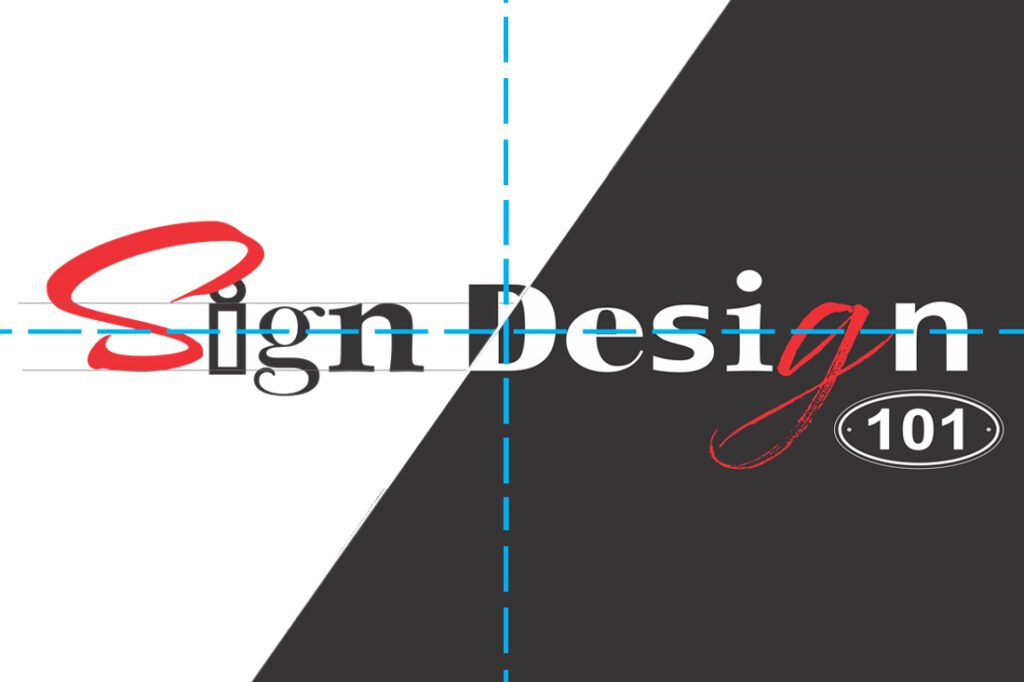
Designing A Sign That Works
An Effective Business Sign Starts with a Great Design
If you’re looking to open a business, you know that a sign is one of the first things you’ll need. The first step in this process is to create your design. But there’s so much more to creating an effective sign design than meets the eye.
Why is sign design so important? Because what might look great on paper or in a design program doesn’t always translate well into a finished product. Here, we’ll focus on some fundamental design principles to consider before and during the design process. The result should be the effective, high-impact sign you envisioned.
Make it Legible
Keeping your design simple and uncluttered should be your first and number one priority. Signs with minimal copy are easier to see and read at a glance. And because you typically only have a few seconds to grab the passers-by’s attention, this is all the more critical. Font style, letter spacing or “kerning,” color selection, white space, illumination type, and other factors will play a role in how legible a sign is. If your sign is illegible, you’ve just wasted your money on this valuable advertising investment.
Fonts
Don’t make the mistake of getting hung up on a pretty font or lettering style. Some fonts just don’t work well and become illegible, especially from a distance. A common misconception is that all upper case lettering is easier to read from a distance when in reality using both upper and lower case text is more legible. It would be best to use clean and simple fonts such as Sans Serif, which can easily be viewed from a distance. And never use more than two different fonts in a single design.
Colors
Selecting the right colors can help powerfully convey your branding. Some colors work well together, while others fall flat. The color blue, for example, is more difficult to read and illuminate well, especially in channel letters. In comparison, red and yellow tend to be strong color choices for signage. If you’re staying true to your brand colors, be aware that custom colors will be more expensive to manufacture than standard ones. And suppose you plan to use more than one sign supplier. In that case, it’s recommended to use the standard “off the shelf” vinyl colors to maintain consistency.
Balance and Contrast
You want to create a balance between the text and your graphics. Utilizing proper white space is very important (white space can also be color). For optimal readability, you should leave at least thirty to forty percent of the sign’s face area as white (negative) space. Complicated patterns, backgrounds, and imagery make it cluttered and difficult to read. When selecting a background color for your design, the greater the contrast, the more legible the text will be from a distance—for example, black contrasts well with light colors, and white works well with darker colors.
Visibility
Signs come in various types, shapes, and sizes, so you want to ensure your design and sign type are appropriate for the distance your customers will view the sign. Are there any obstacles in the way? Is your sign going on a high-rise building? If so, the size and placement will be different than on a roadway. What is the traffic pattern where it will be located? These are all important factors to consider when deciding on a design for your sign.
Some brands utilize a two-color system where the sign is one color during the day, and white at night. This is accomplished through perforating vinyl that allows the white color to come through at night. Example: OneMain is blue during the day, and white at night.
Lastly, keep in mind that some landlords, shopping centers, and municipalities have mandates on certain typestyles or limit the colors used on signage, so it’s essential to do your homework beforehand.
Sign companies typically have in-house design pros to create the best sign package for your intended application. If you decide to go with an advertising agency or design firm, that’s fine too. Just keep in mind the design will need to meet the established manufacturing standards, installation specs, local and city ordinances, and maximum visibility, among other things.
The bottom line – the more visible and readable a sign is from a distance, the longer the viewing time and the better its ability to make a clear and lasting impression.
